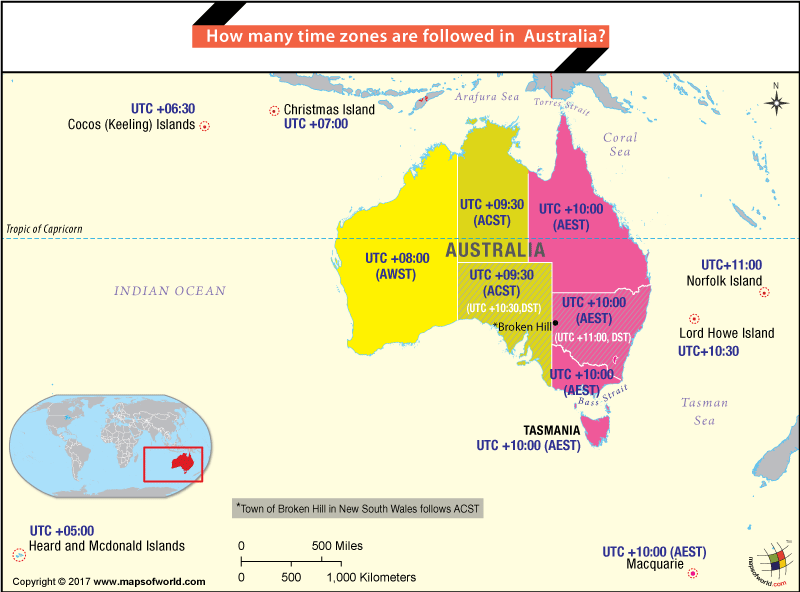

There are three main time zones in Australia, AEST; UTC+10:00, AWST; UTC+08:00, ACST; UTC+09:30
Time zones are divided by their offset from Coordinated Universal Time (UTC). The local time in a time zone is defined by its difference from Coordinated Universal Time (UTC). Australia’s UTC offset ranges from UTC+8 to UTC+11. This article will explore how many time zones are in Australia, UTC Offsets, Daylight Saving Time in Australia, and more.
The time zones of Australia can be considered in two ways. Mainland Australia consists of three standard time zones.
At certain times of the year, some parts of Australia change their clocks to Daylight Saving Time (DST). This means they adjust their local time to be one hour ahead. When this happens, it’s like having two extra time zones in those areas:
Resulting in a total of five time zones across the country. As some parts of the country observe DST while others do not, this creates temporary time zone differences. In total, Australia encompasses six states: New South Wales, Victoria, Queensland, South Australia, Western Australia, and Tasmania, along with two territories: the Northern Territory and the Australian Capital Territory.
Following are the standard time zones of Australia:
This time zone is equal to Coordinated Universal Time plus 10 hours (UTC+10). This time zone observes DST and becomes AEDT-Australian Eastern Daylight Time during those periods. This time zone is observed in New South Wales, Victoria, and Tasmania. Queensland does not observe DST and remains on AEST year-round.
This time zone is equal to Coordinated Universal Time plus 9.5 hours (UTC+9:30). This time zone does not observe Daylight Saving Time (DST). ACST is observed in South Australia and the Northern Territory. Broken Hill, located in New South Wales, also uses this time zone.
This time zone is equal to Coordinated Universal Time plus 8 hours (UTC+8). (does not observe DST). This time zone is observed in Western Australia.
Additionally, following are the time zones including Daylight Saving Time (DST):
This time zone is UTC+8:45. Its local time differs by 45 minutes instead of the normal whole hour. This time zone is observed in a small region in Western Australia. Eucla in Western Australia is 45 minutes ahead of the rest of the state and has this time zone.
This time zone is 10:30 hours ahead of the Coordinated Universal Time (UTC). Its local time differs by 30 minutes instead of the normal whole hour. This time zone is observed on Lord Howe Island.
Daylight Saving Time (Summer Time) is in use in the Australian Capital Territory, New South Wales Victoria, South Australia and Tasmania. Queensland, Northern Territory and most of the Western Australia do not use DST. However, the Eucla region in Western Australia does observe DST. Daylight saving time (+ 1 hour) is used from the first Sunday in October through to the first Sunday in April. During DST, time zones have different time zone names and UTC offsets. In Australia, these are:
Related Links
The Republic of Madagascar is an island country located in the Indian Ocean, off the…
The Euro is the official currency of the European Union. It is, however, not incumbent…
There are many countries or regions that are partially recognized by the UN, have disputes…
The Alaska Statehood Act was signed into law by President Dwight D. Eisenhower in 1958,…
The name Persia may, however, only be used to refer to Iran in some contexts.…
Hawaii is an Island State in the US. It is one of the 50 states…